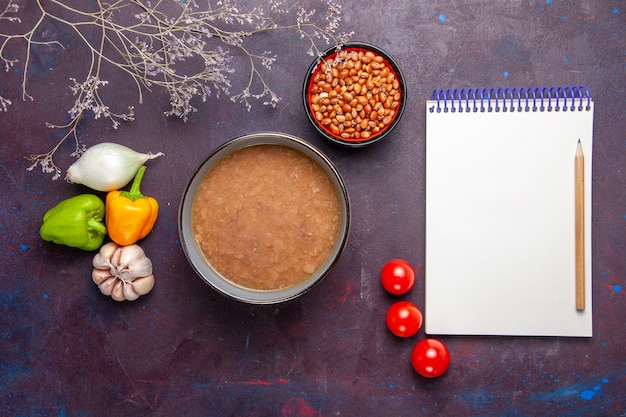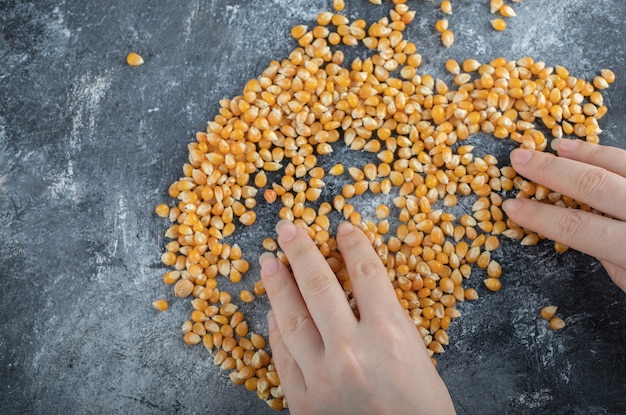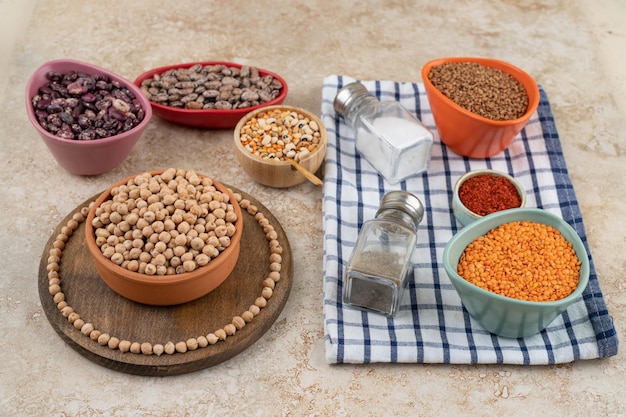(Part 1) The Big Lentil Variety Show

First things first, let's get to grips with the different types of lentils. It's like choosing the right tool for the job – you wouldn't use a hammer to screw in a screw, would you? Each lentil type has its own quirks and cooking characteristics, so understanding them will make a world of difference in your lentil cooking journey.
brown lentils: Your Everyday Champions
Brown lentils are the workhorses of the lentil world. They're earthy, affordable, and hold their shape beautifully during cooking. They’re ideal for hearty soups, stews, salads, and even lentil burgers. They're also incredibly versatile and pair well with a wide range of flavours.
green lentils: The French Fancy
These lentils, known as french lentils or Puy lentils, are a bit more refined. They have a slightly firmer texture and a delicate, almost nutty flavour. They retain their shape exceptionally well, making them a star in salads, side dishes, and even lentil pilafs. They're a bit more expensive than brown lentils, but they add a touch of elegance to any dish.
red lentils: Quick and Easy
Red lentils are the speed demons of the lentil family! They cook up in a flash, often in as little as 15 minutes, and they break down into a creamy, smooth texture. They're perfect for lentil daals, soups, and even dips. You’ll find them in many Indian and Middle Eastern dishes.
black lentils: A Little Bit Different
Black lentils, also called beluga lentils, are a real eye-catcher. They look like tiny black caviar, adding a touch of sophistication to any dish. They have a firm texture that holds its shape wonderfully, making them ideal for salads, side dishes, and even as a decorative element on top of other dishes.
yellow lentils: The Split Wonders
Yellow lentils are the split version of red lentils. They cook even faster than their whole counterparts, often in as little as 10 minutes, and they create a smooth, creamy texture perfect for Indian curries, lentil soups, and even some vegan cheeses.
(Part 2) The Lentil Time Warp

Now, let's tackle the big question: how long do lentils actually take to cook? Well, there's no magic number, because it depends on a few key factors:
- The type of lentil: We've already established that some lentils cook faster than others.
- The size of the lentil: Whole lentils take longer to cook than split lentils because they have more surface area to soften.
- The amount of water: Too much water will dilute the flavour and make the lentils cook longer, while too little water can cause them to burn.
- The cooking method: A pressure cooker is a real game-changer, cutting down cooking time significantly. Simmering on the stovetop takes a bit longer.
Let's get into some general guidelines for lentil cooking times. Remember, these are just estimates, and you may need to adjust the time depending on your specific lentil batch.
General Lentil Cooking Time Estimates
This table gives you a general idea of how long different types of lentils need to cook. It's a great starting point, but be prepared to adjust the time based on your specific cooking environment.
| Lentil Type | Cooking Time (Approximate) |
|---|---|
| Brown Lentils | 20-30 minutes |
| Green Lentils | 25-35 minutes |
| Red Lentils | 15-20 minutes |
| Black Lentils | 25-35 minutes |
| Yellow Lentils | 10-15 minutes |
It's always a good idea to check your lentils towards the end of the estimated cooking time to make sure they're cooked to your liking. You can use the smash test (more on that in a moment) to gauge their texture.
(Part 3) The Art of Testing Your Lentils

My grandmother, a culinary wizard who could turn anything into a delicious meal, taught me a simple, but invaluable trick for testing lentil doneness: the smash test.
The Smash Test
Take a lentil out of the pot and gently try to smash it between your fingers. If it smashes easily, it's cooked through. If it's still a bit firm, give it a few more minutes. This test is a quick and reliable way to check whether your lentils are ready.
(Part 4) The Pressure Cooker Advantage
Let’s talk about the pressure cooker - it's a real game-changer when it comes to lentil cooking time. I was a bit hesitant at first, pressure cookers seemed a bit intimidating, but once I took the plunge, I was hooked.
The secret to using a pressure cooker for lentils is to make sure there’s enough liquid in the pot. You don't want the lentils to burn, and you want the pressure to work its magic.
Pressure Cooker Lentil Cooking Time
Here’s a rough guide to cooking lentils in a pressure cooker. Always refer to the manufacturer’s instructions for your specific model.
- Brown lentils: 10-15 minutes
- Green lentils: 12-18 minutes
- Red lentils: 5-10 minutes
- Black lentils: 12-18 minutes
- Yellow lentils: 5-8 minutes
The pressure cooker can cut down cooking time by half, if not more, making it a valuable tool for busy cooks.
(Part 5) The Stovetop Showdown
Of course, you don’t need a pressure cooker to cook lentils. You can cook them on the stovetop using a simple pot. Here’s a simple step-by-step guide:
Stovetop Lentil Cooking: Step-by-Step
- Bring a pot of water to a boil.
- Add your lentils and a pinch of salt.
- Reduce the heat to a simmer and cover the pot with a lid.
- Cook for the time recommended for your lentil type (refer to the table in Part 2).
- Check the lentils for doneness using the smash test.
- Once cooked, drain the lentils if necessary (some recipes call for a little of the cooking liquid).
The key here is to ensure the lentils are simmering gently, not boiling furiously. This ensures they cook evenly and don't break down too much.
(Part 6) The Secret Weapon: The Soak
I learned this tip from a friend who's a real lentil expert - he always soaks his lentils for an hour or two before cooking them. He says it makes them cook faster and more evenly, and I have to agree. It's a great way to get a head start on dinner and makes the lentils a bit softer and creamier.
(Part 7) The Don’t-Overcook-Them Rule
Here’s a truth I’ve learned the hard way – overcooked lentils are a recipe for disaster! They become mushy and lose their texture, and that's a big no-no in my book. Aim for a little bit of bite, that's the key to perfectly cooked lentils.
How To Tell If Your Lentils Are Overcooked
Here are a few telltale signs that your lentils might be overcooked:
- They're mushy and fall apart easily.
- The cooking liquid is thick and starchy.
- They have a strong, earthy flavour that might be a little overpowering.
If you think your lentils are overcooked, try draining them and adding them to a dish where they’ll be broken down further, like a soup or a curry.
(Part 8) Beyond the Basics: Seasoning and Flavouring
Now, let's move on to the fun part – flavouring your lentils! Once you've mastered the cooking basics, you can really let your creativity shine.
Lentil Seasoning Tips
Here are some of my favourite flavour enhancers for lentils:
- Herbs: Fresh herbs like parsley, mint, cilantro, or dill add a bright and fresh flavour.
- Spices: Spice up your lentils with cumin, coriander, turmeric, paprika, or garam masala.
- Garlic and onion: Sauté some chopped garlic and onion in olive oil before adding your lentils.
- Tomato paste: A dollop of tomato paste adds richness and depth of flavour.
- Lemon juice: A squeeze of lemon juice adds a touch of brightness and acidity.
I love experimenting with different flavours, each combination feels like a culinary adventure!
(Part 9) FAQs
Here are a few questions I get asked a lot about lentil cooking.
Why Are My Lentils Still Hard After Cooking?
This could be due to a few things:
- You didn't cook them long enough: Give them a few more minutes and try the smash test again.
- You used too much water: This can dilute the lentils and make them take longer to cook.
- You didn't soak them: Soaking lentils before cooking can help them cook more evenly.
Why Are My Lentils Mushy?
You might have overcooked them! Try to stick to the recommended cooking times, and be sure to do the smash test to check for doneness.
Can I Cook Lentils In The Oven?
Yes, you can! Preheat your oven to 350°F (175°C). Toss the lentils with olive oil, salt, and pepper, then spread them in a single layer on a baking sheet. Cook for 20-30 minutes, or until they're tender. This method is great for roasting lentils with other vegetables.
Can I Cook Lentils In A slow cooker?
Absolutely! Slow cookers are ideal for lentils because they cook them gently and evenly. Just add your lentils, broth, and seasonings to the slow cooker, and cook on low for 4-6 hours, or on high for 2-3 hours.
How Long Can I Store Cooked Lentils?
You can store cooked lentils in the refrigerator for up to 3 days. Just make sure they're properly cooled down before you store them.
There you have it! Everything you need to know about lentil cooking time and beyond. Now go out there and cook up a lentil storm! Let me know if you have any questions in the comments below. I'm always happy to help!
Everyone is watching

How to Cook Frozen Lobster Tails Perfectly: A Step-by-Step Guide
RecipesLobster. Just the word conjures up images of lavish meals, special occasions, and a taste of luxury. But let's...

Pigs in a Blanket Cooking Time: How Long to Bake for Perfect Results
RecipesAh, pigs in a blanket. Just the name conjures up images of those delightful little parcels of crispy pastry en...

Pork Fillet Cooking Time: How Long to Cook It Perfectly
RecipesPork fillet, or tenderloin as it's sometimes called, is a real favourite in our house. It's so versatile, and...

The Ultimate Guide to Cooking Delicious Frankfurters
RecipesLet's face it, we all love a good frankfurter. It's a classic, simple, and always satisfying. But let's be rea...

Wolf Meat Recipes: A Guide to Cooking Wild Game
RecipesLet's be honest, you don't see wolf meat at your local butcher shop every day. It's a bit of a wild card, but ...
